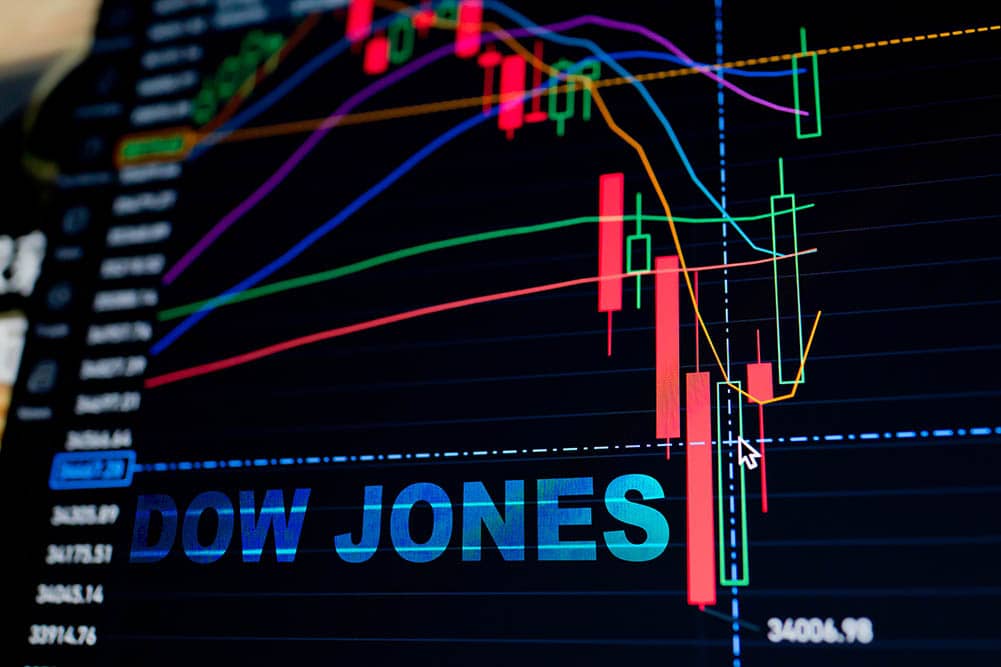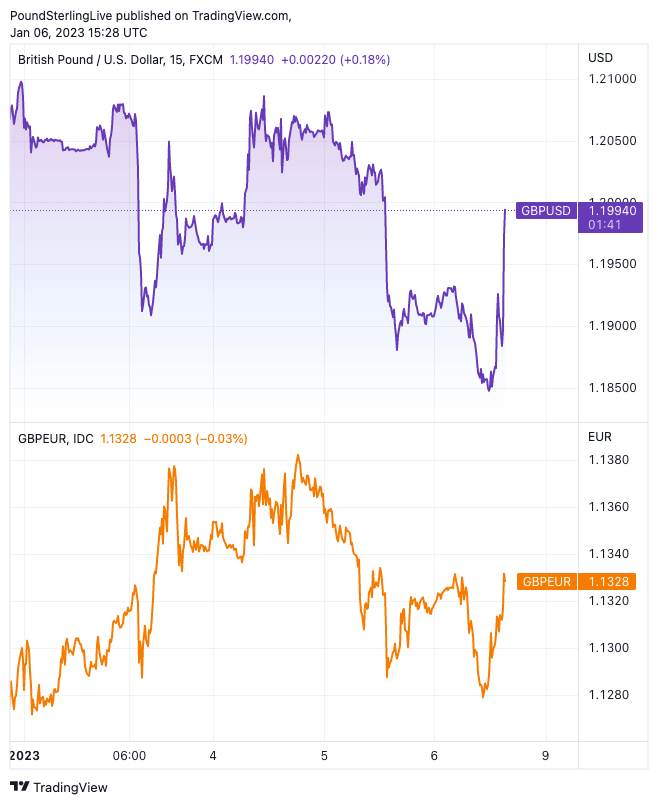Pound Sterling Advances against Dollar and Euro, U.S. Data in the Driving Seat
- Written by: Gary Howes
-

Image © Adobe Images
A strong stock market rebound following some disappointing U.S. data has offered the British Pound a welcome bid towards the end of what has been a punishing week.
A nearly audible gasp was heard across the analyst community after the U.S. ISM Services PMI read at 49.6 in December, which was significantly below the 55.0 the market was expecting.
Any reading below 50 is consistent with contraction in the largest sector of the U.S. economy and underscores expectations for a notable economic slowdown to take hold over the coming months.
The figure represents a dramatic slowdown from November's 56.5 and the verdict by the market was sharp: stocks rallied and the Pound recovered as markets bet that an economic slowdown in the U.S. was taking hold, meaning inflation will continue to fall back.
"US services was one of the last shoes to drop before a recession. That shoe has now dropped," says Viraj Patel, a strategist at Vanda Research.
The need for further life-sucking interest rate hikes from the Federal Reserve is therefore now curtailed and analysts saying only one further hike is now likely.
The end of the Fed rate hiking cycle is therefore heralded as a pro-risk development by investors.
The Pound is a pro-risk financial asset that benefits when markets are rising, therefore developments towards the end of the week are ultimately supportive of the UK currency:
Above: An eventful first trading week of 2023 comes to an end with GBP registering some gains. Consider setting a free FX rate alert here to better time your payment requirements.
The market is choppy at present with Pound Sterling Live reporting on Friday morning how a fall in global equities had resulted in across-the-board losses for the Pound.
The Pound to Euro exchange rate has recovered losses from earlier in the day to go back to 1.1340 and the Pound to Dollar exchange rate recovered back above 1.19 to quote at 1.1970.
The ISM data followed the release of U.S. labour market statistics for December which showed wage pressures were easing and the rate of job creation in the U.S. continued to slow.
The non-farm payrolls (NFP) report for December showed 223K jobs were added which was down from November's 256K.
The figure was nevertheless above consensus expectations for 200k, providing an upside surprise that would typically be a knee-jerk positive for the Dollar which has rallied this week amidst a series of other labour market indicators that point to a still-strong economy.
Indeed, the unemployment rate unexpectedly fell to 3.5% from 3.6% in November, defying expectations for a reading of 3.7%.
The NFP report was however not strong enough to break a now well-entrenched trend of declining monthly increases in job gains and the Federal Reserve will therefore likely stick with existing plans to hike rates a couple more times before halting.
"Payrolls can’t keep up this pace," says Ian Shepherdson, Chief Economist at Pantheon Macroeconomics. "The third straight hefty drop in temp hiring, down 35K, is an ominous sign, as it often leads other hiring."
Average hourly earnings rose 4.6% in the year to December, which was far lower than the 5% the market was looking for and represents a deceleration from November's 4.8%.
The wage figures are important in that they will tell the Fed that fears of an inflationary wage-price spiral are now unlikely to be realised.
"There are signs that wage growth could now be on a downward trend. This is good news for the Fed, which will likely slow the pace of rate hikes to 25bp in early February," says Knut A. Magnussen, an analyst at DNB Bank ASA.
The Dollar might have returned to strength early in 2023, but the bigger picture remains one in which the Fed steps back in the first quarter and the Dollar eventually retreats on a more sustained basis.
"The USD cycle is being stretched. We expect to see a bumpy road, but position for a stronger depreciation in 2023," says Monica Defend, Head of Amundi Institute. "Kind Dollar is losing some of its shine".

